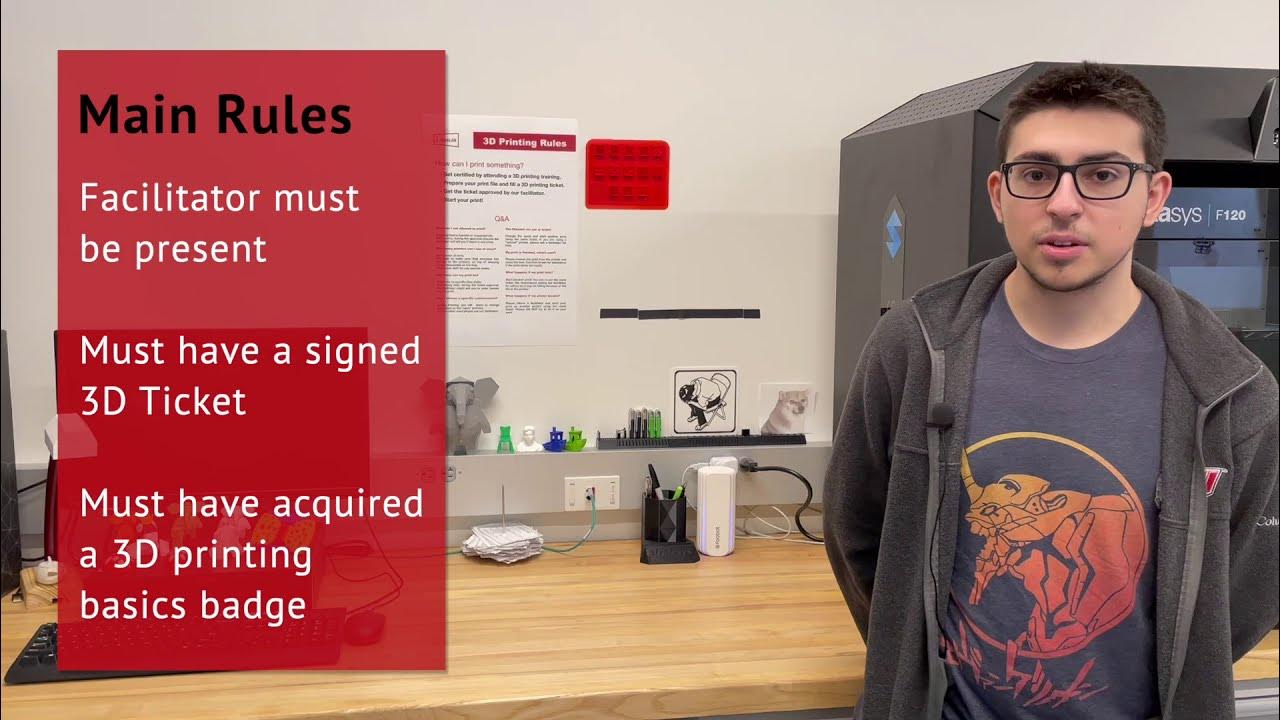3D-Drucker SPEED erklärt! 30% schneller drucken! (inkl. Bambu CHT Guide)
Summary
TLDRThe video discusses 3D printing speed, explaining how advertised print speeds can be misleading. It goes into detail on what factors actually determine print speed, like acceleration, nozzle size, hotend design, filament flow rate, and more. It demonstrates how to properly test volumetric flow rate for different filaments. The video shows how upgrading the hotend and nozzle on a Bambulab printer significantly increased volumetric flow, allowing faster print speeds. It emphasizes understanding the principles so you can tune a printer for optimal real-world print speeds.
Takeaways
- 😀 The 3D printer speed specification mm/second alone does not determine the actual print speed which depends on many factors like acceleration etc.
- 😮 The max speed specification by manufacturers is often misleading and makes little technical sense.
- 🤔 Volumetric speed considering parameters like layer height and nozzle size determines actual print speed.
- 🧐 To increase print speed, identify and eliminate bottlenecks like extruder capacity, hotend design etc.
- 🤓 The standard Bambulab hotend and nozzle significantly limit max volumetric speed.
- 👍 Upgrading to a CHT nozzle improves volumetric speed by 30% without quality issues.
- 😊 With a 0.6 CHT nozzle, even faster speeds are possible but may require redesigning other components.
- 🤨 Bambulab likely optimized print settings for reliability over max speed.
- 🔧 Further tuning by upgrading more components can increase speed but causes a cascade of additional upgrades.
- 💡 Understanding key terminology, measurements and doing calibrated test prints is important before tuning for speed.
Q & A
What factors influence the actual print speed of a 3D printer?
-The actual print speed depends on many factors including the printer mechanics, acceleration, extruder performance, hotend design, nozzle size, filament properties, print temperature and more.
How is print speed usually specified for 3D printers?
-Print speed is usually specified in mm/s (millimeters per second), referring to the raw movement speed of the print head.
Why can the specified maximum print speed be misleading?
-The specified maximum print speed only refers to the print head movement capability. It does not account for acceleration capability, extruder performance limits, filament properties etc. which actually determine the realizable print speed.
What is volumetric print speed and why is it important?
-Volumetric print speed measures how much filament volume can be extruded per second, accounting for nozzle size, layer height etc. It determines the speed limit based on the complete printing process.
How can the maximum volumetric print speed be determined?
-The maximum volumetric print speed can be calibrated by printing test models at incrementally higher speeds to identify the onset of underextrusion.
How did the video modify the 3D printer to increase print speed?
-The video upgraded the hotend with a larger nozzle and high flow-rate copper nozzle to reduce bottleneck. It increased max volumetric speed by 30% without underextrusion.
Why did further increasing the nozzle size to 0.6mm cause problems?
-The 0.6mm nozzle required more heating power than the stock heater could provide, leading to heat creep and extrusion inconsistencies.
What type of nozzle material is recommended and why?
-The steel nozzle is recommended over brass as it enables printing more abrasive filament types without rapid wear, with no noticeable improvement from brass in print speed tests.
How much improvement was achieved with PETG filament?
-The print speed improvement with the upgraded hotend was less for PETG filament compared to PLA, with reliable speeds increased to around 25 mm3/s.
What further upgrades would be needed to keep increasing print speed?
-To keep pushing print speed, further upgrades to extruder, hotend heater, cooling, motion system, frame rigidity etc. would be needed to address the next bottleneck.
Outlines

Cette section est réservée aux utilisateurs payants. Améliorez votre compte pour accéder à cette section.
Améliorer maintenantMindmap

Cette section est réservée aux utilisateurs payants. Améliorez votre compte pour accéder à cette section.
Améliorer maintenantKeywords

Cette section est réservée aux utilisateurs payants. Améliorez votre compte pour accéder à cette section.
Améliorer maintenantHighlights

Cette section est réservée aux utilisateurs payants. Améliorez votre compte pour accéder à cette section.
Améliorer maintenantTranscripts

Cette section est réservée aux utilisateurs payants. Améliorez votre compte pour accéder à cette section.
Améliorer maintenantVoir Plus de Vidéos Connexes

3D Printers - CompTIA A+ 220-1101 - 3.7

3D Printing - Introduction to Slicing

Which LAYER HEIGHT gives you the STRONGEST 3D prints?

Comgrow T500, the only fast Klipper firmware 3D printer with a 500mm cube print volume, linear rails

Print Faster with Custom Cura Profiles for Ender 3 and Ender 3 Clones

3D Printing Basics Training
5.0 / 5 (0 votes)
